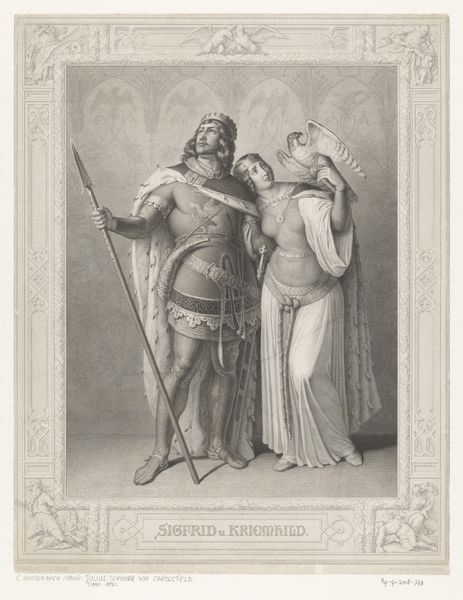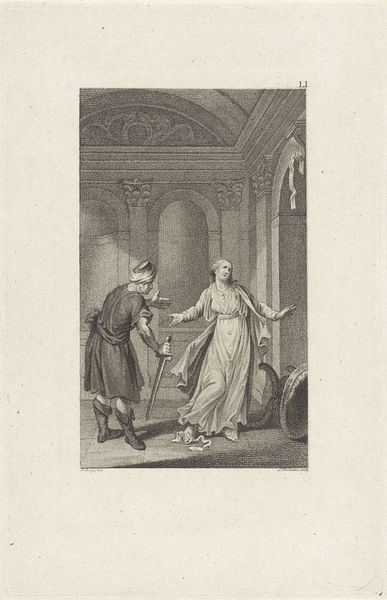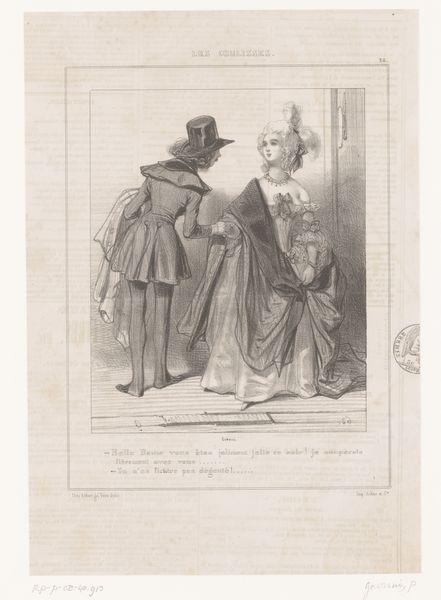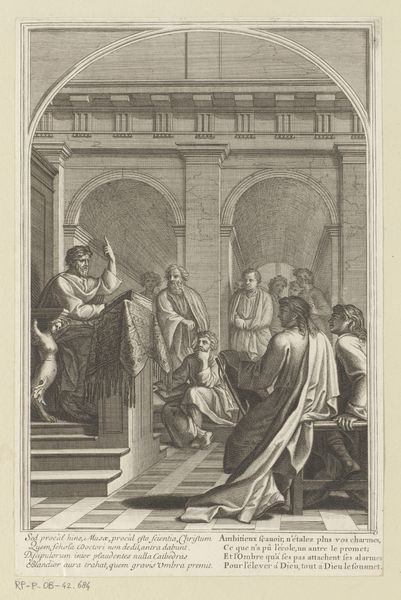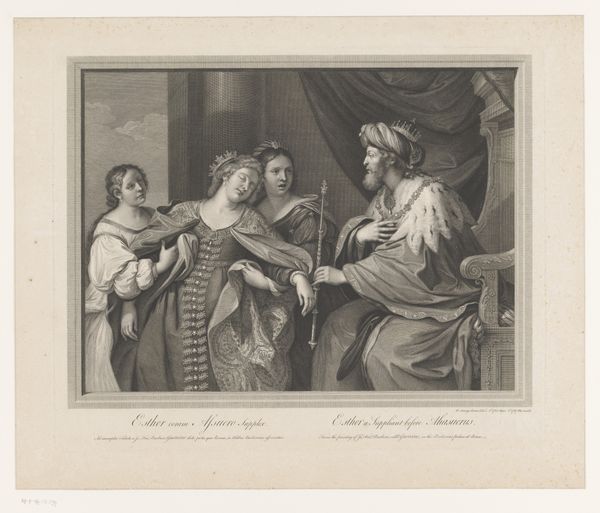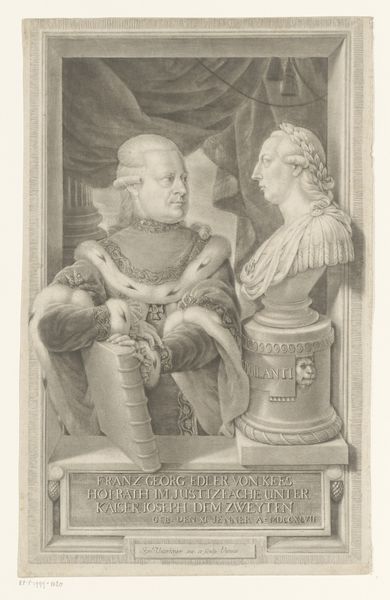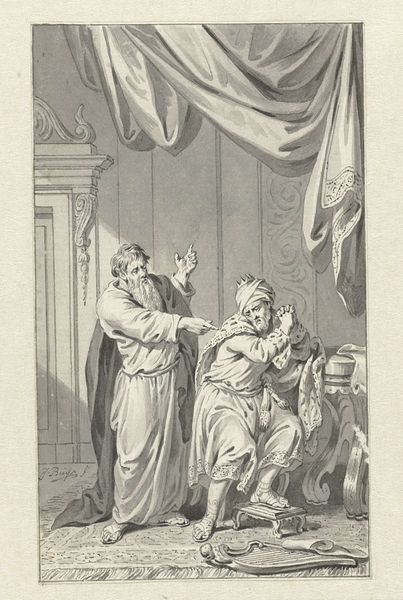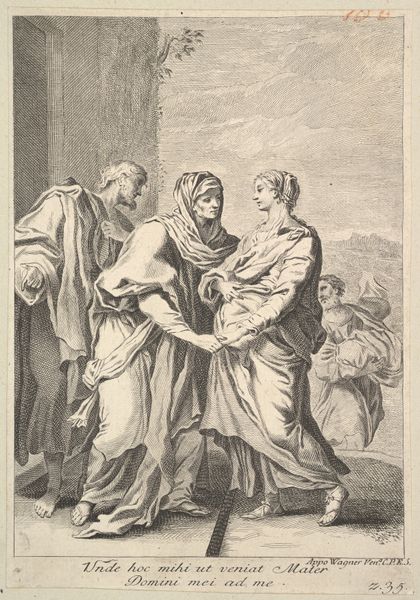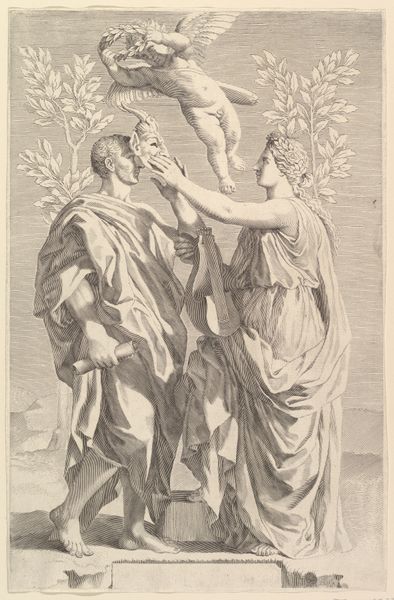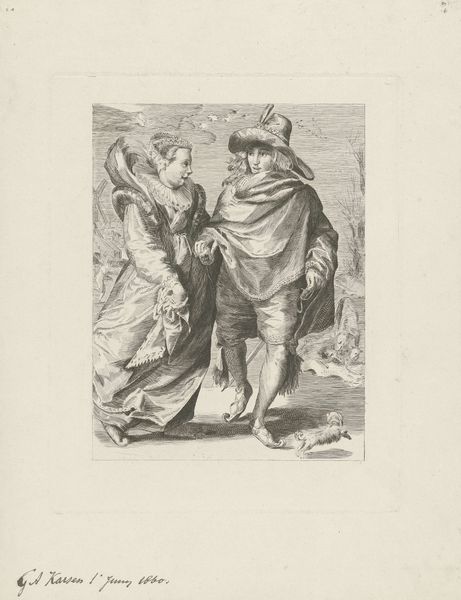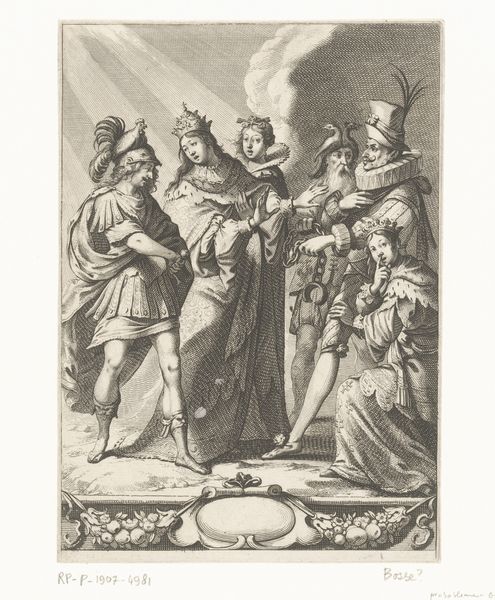
Dimensions: height 429 mm, width 335 mm
Copyright: Rijks Museum: Open Domain
Curator: This engraving from around 1860 by Carl Arnold Gonzenbach portrays a pivotal scene from the Nibelungenlied: Gunther and Brunhilde. Editor: There's such a weight of… something… in Brunhilde’s face. A reluctance? She’s physically linked to Gunther, but her averted gaze speaks volumes about power dynamics here, wouldn’t you say? Curator: Absolutely. Their strained connection becomes a potent symbol. It reflects the transition from autonomy to imposed alliance and the loss of agency through the cultural encoding of marriage. Note how the artist positions them centrally within a gothic framework, mirroring the story’s romantic undertones even if the immediate image radiates discomfort. Editor: That averted gaze is everything. It immediately brings to mind how so often women in art have been rendered passive subjects, their inner lives erased in favor of symbolic roles, which are defined by men. How do we untangle Brunhilde's experience in that patriarchal narrative? The legend itself portrays her as deceived and forced. Curator: The engraving employs specific imagery loaded with meaning. Observe the fine details in their garments; his are distinctly militaristic and imposing compared to her simpler clothing. It creates a visible visual statement about societal rank, gendered expectation, and ultimately the constrained position women were confined to. The helmet functions almost like a mask of authority. Editor: But beyond rank and history, doesn’t this image scream forced submission? Considering interpretations of the epic's influence on notions of German identity, doesn't this pairing further serve to depict, even celebrate, dominance? Even her gesture feels internalized – a swallowed cry. Curator: That internalized element is critical! Her body language and positioning reflect a tension of interior resistance versus outward compliance – but isn’t that something that's so often lost? How often do we actively consider this enforced contract or the lasting impacts on one's psychology, their cultural, familial and social status? It all has lasting effects. Editor: Agreed. What initially seems a mere historical portrayal of characters reveals a painful glimpse of the silent power struggles that continue echoing through contemporary discussions. Looking closer reveals a far broader network of domination than initially meets the eye. Curator: And now hopefully our visitors will do the same: observe the symbolism. Delve into its meaning! Question assumptions, examine how figures resonate even now. Editor: Yes. The personal is, irrevocably, political and that includes the artwork before you. It's never *just* history; it’s an active negotiation of identity, power, and representation.
Comments
No comments
Be the first to comment and join the conversation on the ultimate creative platform.
